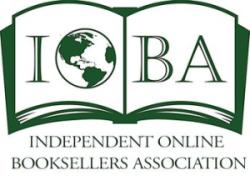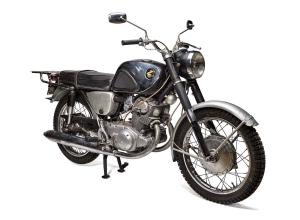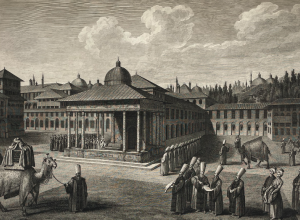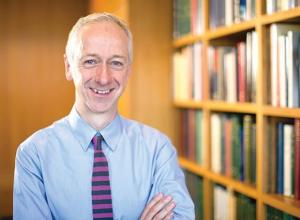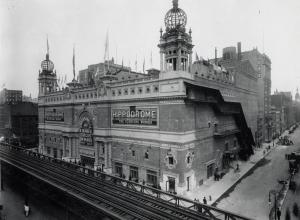The Nobel Prize, Papers, and Personal Research Library of Physicist Richard P. Feynman at Sotheby's
New York-Sotheby’s is thrilled to announce that the Nobel Prize, papers and personal research library of the brilliant, inspiring, and much-beloved theoretical physicist Richard P. Feynman will headline our second annual History of Science & Technology auction in New York on 30 November 2018 - in the year of the centenary of his birth. The group is led by the Nobel Prize - including its associated presentation materials - that Feynman shared in 1965 with Julian Schwinger and Shin’ichiro Tomonaga “for their fundamental work in quantum electrodynamics.” The offering also features a remarkable and enlightening collection of manuscripts spanning the full length of Feynman’s career - the only known collection of manuscripts by Feynman to exist outside of the archive at the California Institute of Technology (Caltech), where he taught for nearly four decades.
Select highlights will be on public view at Sotheby’s London from 14 - 16 September before the full auction exhibition opens in New York on 25 November.
Cassandra Hatton, Vice President & Senior Specialist in Sotheby’s Books & Manuscripts Department, commented: "A towering intellect, an inspiring teacher, a masterful storyteller, and a lover of fun with a relentless curiosity. His lessons about life have inspired countless people around the world (including myself) to find what fascinates us and to pursue it relentlessly; to always question authority and to think for ourselves; to ignore others' expectations of who we ought to be; and to embrace doubt and failure as important steps in the pursuit of understanding. One of the keenest intellects to have ever graced us with their presence, he peered into the quantum realm, and had the passion to help us learn how to see the world around us. I am thrilled and incredibly honored to have been entrusted with the sale of these incredibly rare and important items from the rockstar of physics, who has long been one of my personal heroes."
RICHARD P. FEYNMAN
Richard Phillips Feynman (1918-1988) was one of the most brilliant and beloved theoretical physicists of the 20th century. He studied at the Massachusetts Institute of Technology where he obtained his B.Sc. in 1939, and went on to obtain his Ph.D from Princeton in 1942. He was a research assistant at Princeton from 1940-41 and went to Los Alamos to work on the development of the Atom Bomb with the Manhattan Project from 1942-45, where he soon distinguished himself as one of the most brilliant and original thinkers of his time. He then spent several crucial years as Professor of Theoretical Physics at Cornell University from 1945-1950, before becoming professor of Theoretical Physics at Caltech, where he spent the remainder of his career.
Feynman is considered by many to be the father of nanotechnology for two prizes he offered in a 1959 talk entitled, “There’s Plenty of Room at the Bottom,” where he prompted thinking on a very small scale. Between 1961-63 Feynman gave a series of lectures on introductory physics for freshmen and the following year, sophomores, at Caltech. The series was edited and published as “The Feynman Lectures of Physics,” which is thought to be the most popular physics book ever written.
In 1965 he won the Nobel Prize in Physics, sharing it with Julian Schwinger and Shin’ichiro Tomonaga for his work remaking the theory of quantum electrodynamics, by introducing his “Feynman diagrams.” He was one of only 13 people to have been awarded the Albert Einstein Award - other recipients include Stephen Hawking, Kurt Gödel, John Wheeler, and Julian Schwinger. His collection of reminiscences and personal anecdotes, “Surely You’re Joking Mr. Feynman,” was published in 1985 and became a runaway bestseller. In 1986, Feynman was again in the public eye, this time working on the commission investigating the explosion of the Challenger space shuttle. He died in 1988 after a long battle with abdominal cancer.
1965 NOBEL PRIZE & PAPERS
The November auction will be led by Feynman’s 1965 Nobel Prize in Physics (estimate $800,000/1.2 million). Feynman shared the prize with fellow physicists Julian Schwinger and Shin’ichiro Tomonaga, “for their fundamental work in quantum electrodynamics, with deep-ploughing consequences for the physics of elementary particles.” Feynman’s invention of ‘Feynman diagrams’ - pictorial representations of particle interactions - in particular revolutionized the field.
Feynman Manuscripts
The trove of manuscripts on offer spans the full length of Feynman’s career, from his early work on the Manhattan Project to his long tenure at Caltech, and addresses topics such as the Atom Bomb, Quantum Electrodynamics, Computing, Organic Chemistry, Nanotechnology, Mathematics and Physics. The archive also includes books from his personal research library — many annotated — as well as his tambourine. Individual and themed groups of manuscripts will be offered across a number of lots.
Outside of the Feynman Nobel Prize and archive, the History of Science & Technology auction will include books & manuscripts, scientific & technological instruments, original artwork, and other artifacts spanning from the 16th through the 21st centuries in categories ranging from physics, mathematics and cryptography, to medicine, biology, computing and astronomy.
A private collection of magnificent 15th-19th century books & scientific instruments will offer early astronomical treatises and celestial atlases - many hand-colored - and spectacular planetary models, including armillary spheres, orreries, and planetary models. The breathtaking work of Neuroscientist-turned artist Dr. Gregg Dunn and paper sculptor Rogan Brown will also be represented, in what will be an auction debut for both of these highly talented and totally original artists.





